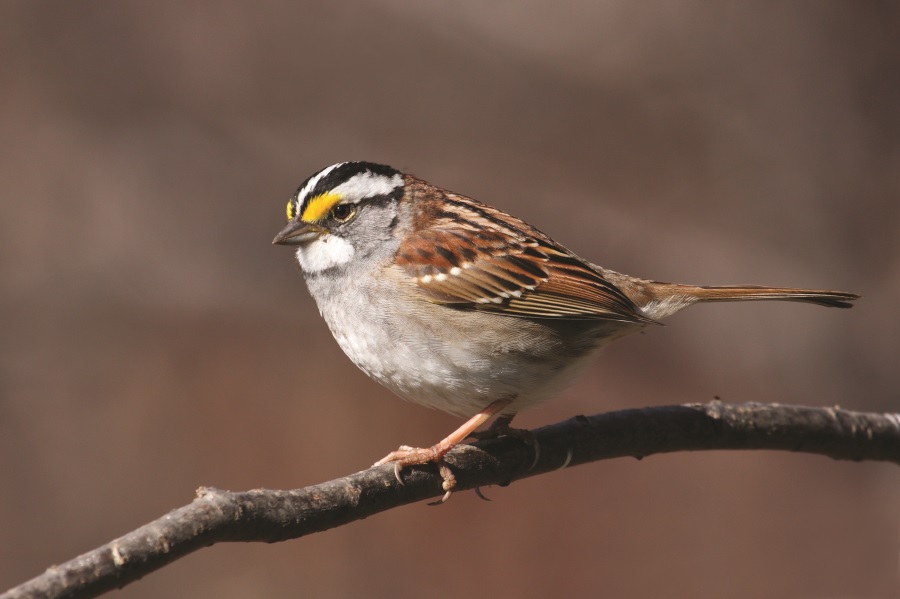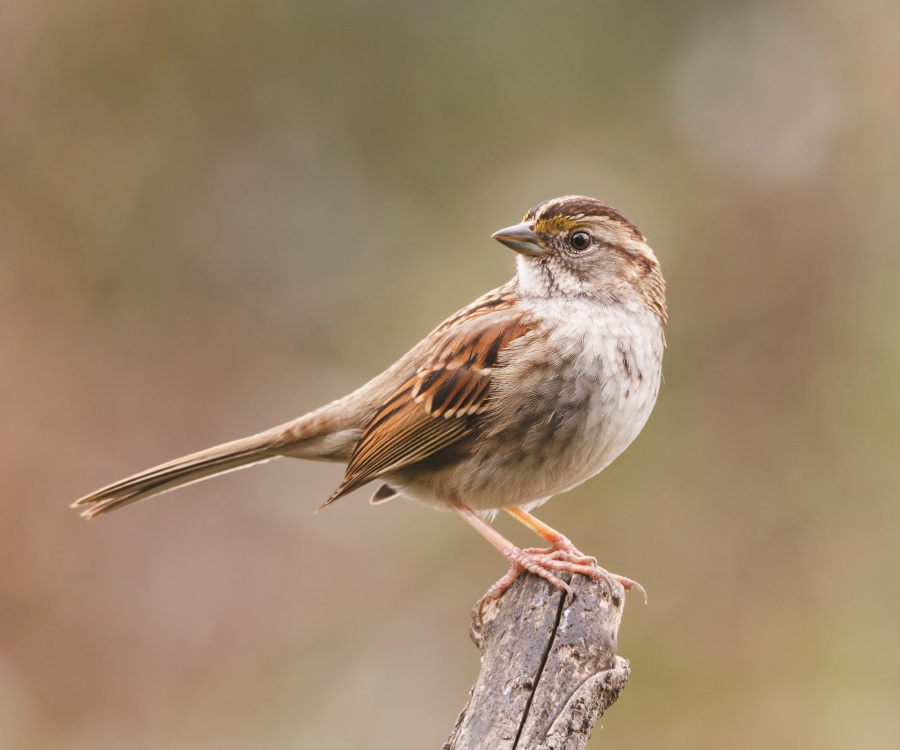Winter is not easy if you’re a bird. The abundant food supply you relied on all summer is gone, you use a lot of energy keeping warm, and without leaves on the trees, you have fewer places to hide when predators appear.
Birds in the northeastern U.S. tend to flock together over the lean months — not just with members of their own species, but with a diverse array of other birds. It’s not uncommon to see chickadees, woodpeckers, kinglets, nuthatches, and warblers feeding in one flock. It may sound surprising that these birds would choose to forage with their would-be competitors. But research has revealed that these mixed flocks help keep their members alive.
Mixed flocks are made up of two kinds of birds. There are “nuclear” species, which form the core of the flock, and “satellite” or “attendant” species, which gather around the nuclear species and follow them in their foraging. In the forests of Cape Cod, our nuclear species are typically chickadees and titmice, while common satellite species include nuthatches, woodpeckers, warblers, sparrows, and thrushes.

The primary theory to explain why birds would flock up is to avoid predators. The idea is that a bird on its own must spend a lot of time and energy looking out for predators, while birds in a flock can have certain birds serve as lookouts while others forage. Furthermore, nuclear species like chickadees tend to be more vigilant and quicker to sound the alarm if a predator appears. Perhaps satellite species join these flocks to benefit from the watchful eyes of the nuclear species.
One of the best experiments to test this theory took place in Ohio, where the winter-feeding flocks closely resemble those on Cape Cod. In this experiment, two scientists from Ohio State University studied the mixed feeding flocks in fragmented patches of woodland surrounded by farm fields — essentially, islands of forest. These flocks consisted of chickadees and titmice as nuclear species and white-breasted nuthatches, downy woodpeckers, and red-bellied woodpeckers as satellite species.
In half of these patches, the scientists caught and removed all the chickadees and titmice, leaving half the flocks with no nuclear species. They then watched the remaining satellite birds over the course of the winter to see how they behaved.
They found that, in the patches without nuclear species, the nuthatches and woodpeckers spent much more time and energy watching for predators. This, in turn, led to them eating less and choosing food sources only in parts of the woodlots that were sheltered from the wind in order to save energy.
For the nuthatches, the loss of nuclear species was exceptionally dangerous — nuthatches in woodlots without chickadees and titmice tended to be in poorer health and had a lower chance of survival than those in plots with chickadees and nuthatches in them. In essence, flocking with watchful chickadees gave these birds safety from predators, which gave them more time to look for food and therefore helped them survive the winter.
But this exchange doesn’t seem to go both ways. A meta-analysis of studies on mixed species flocks led by researchers from the Indian Institute of Science found that, according to the available research, only satellite species get the benefits of extra foraging time. The nuclear species are just as vigilant no matter who they’re flocking with. So why do nuclear species like chickadees tolerate hangers-on?
A study in the woods of Tennessee, where chickadees are the nuclear species, helped answer this question. A group of researchers attracted birds to an elevated platform bird feeder, waited for a flock to form around the feeder, removed all the seed, and hung a new feeder beneath it. They then watched to see how long it took the birds to find the new feeder.
The researchers found that flocks with more species in them tended to find the food faster, allowing all members of the flock to access the new food more efficiently. This finding led the researchers to suggest that nuclear species benefit from being in more diverse flocks because the satellite species find food sources that they might overlook, which allows nuclear species to access a wider variety of food thanks to the different feeding strategies of the satellite species. This dynamic is particularly useful in winter months when food is less abundant.
To see a mixed species flock, then, is to peer into one of the most complex mutually beneficial systems in the animal kingdom. Satellite species point nuclear species toward new food sources, and nuclear species keep an eye out for predators so satellite species can relax and feed more. Satellite species might get the better end of this deal, but the nuclear species are clearly benefiting enough to maintain the system.
Most fascinating of all is that we’ve barely scratched the surface of how these flocks operate, especially when it comes to their communication. Woodpeckers and chickadees are as distantly related as we are from mice, after all. But somehow, they communicate well enough to maintain their flock, twittering to each other as they search for whatever meager food sources they can find in order to survive an inhospitable winter.


